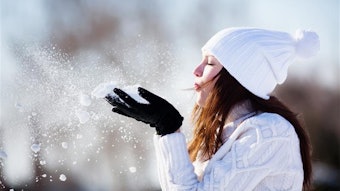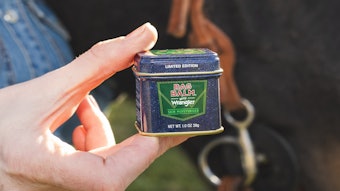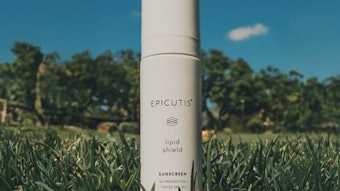Cleansing is the first step in any good skin care routine to provide visible benefits and health to skin. As such, it should follow seasonal patterns. All formats of facial cleansing products are designed to remove dirt and debris; shedding corneocytes, sweat, sebum and other compounds that constitute the acid mantle. The traditional way of cleansing, until a decade or so ago, advocated using soap and water, or rich cleansing milk and toner, depending on the consumer’s preference. This approach has been superseded by cleansing balm in winter and mild facial wash in summer.
Cleansing balms are rich, balmlike products that melt when applied to the face, preferably in a circular motion. The formulations are based either on liquid paraffin and lanolin derivatives, or plant oils, e.g., sesame, soybean, grape seed, almond, etc., combined with cocoa butter and beeswax. Mild facial washes are light, usually non-foaming products based on surfactants such as cocamidopropyl betaine and derivatives of glucosides, and enhanced with moisturizing ingredients, i.e., glycerin, Aloe barbadensis and niacinamide, which are particularly beneficial.
Facial skin cleansing habits differ around the world depending on cultural perceptions, age and skin type. The British consumer prefers convenience, particularly in cleansing. Wet cleansing wipes have gained high penetration in the UK market—69% of consumers used them in 2010, according to Mintel, and they are popular from central London to rural Yorkshire.1 In contrast, the American approach to facial cleansing is more intense, and the Japanese use double-cleansing and products that lead to a feeling of “squeaky clean” skin.
Cleanser removal
In terms of the cleanser removal, cotton pads have been upgraded to flannel or muslin cloths, mildly abrasive sponges and mitts. One of the most innovative flannels is Emma Hardie’s Lift and Sculpt Cleansing Cloth, with a mildly abrasive muslin side to exfoliate uneven and congested areas and a smooth, gentle microfiber side to remove the cleanser. Alternatively, consumers use battery-powered cleansing devices such as the Neutrogena Wave Power Cleanser and Clarisonic Skin Cleansing System, which use a gentle sonic micro-massage action to cleanse effectively and deeply without abrasion.
In Japan, sponges have been used for centuries for gentle, thorough cleansing. The Konnyaku plant sponge, an antibacterial with bamboo charcoal, eliminates blackheads through gentle exfoliation while retaining the pH balance of skin. Interestingly, another product, Supracor SpaCells Facial Sponge, is a honeycombed mitt based on aerospace technology that is used daily for softer, smoother, younger looking skin. It is designed to cleanse and remove makeup but also exfoliate and massage, i.e., stimulate blood and lymphatic fl ow, to decrease puffiness and promote cellular regeneration.
Climate and season
Th effect of environmental conditions on the skin changes with geographic location and season. Exposure to hot weather or climate induces sweating, sebum excretion and open pores, increased blood flow and vasodilation. Higher skin temperature increases sebum excretion in the range of 10% per 1°C;2 exposure to cold climate oft en has the opposite effect.
The stratum corneum is a biosensor and its barrier function responds adaptively to the external environment. In terms of diff erent climates, humidity and temperature play an important role. For example, consumers living in dry climates like Arizona have a stronger barrier function and less dry skin, compared with those living in humid climates such as New York. This is due to increased ceramide and desquamatory enzyme levels.3 Also, in animal models, barrier function is enhanced by prolonged exposure to a dry environment due to higher epidermal lipid synthesis and increased lamellar body production. In contrast, after the skin adapts to high humidity, there is a delay in barrier recovery due to the diminished capacity of the skin to respond to external challenges.4
In terms of seasonal change, during winter months, there is a significant reduction in stratum corneum ceramides, cholesterol and fatty acids5 and also in the natural moisturizing factor (NMF); in particular, potassium and lactate levels, with a concomitant increase in pH and stratum corneum stiffness.6 These changes often lead to a weaker barrier function and precipitate the “dry skin cycle”.7 In summer, cleansing with harsh and foaming facial cleansers can potentially damage the skin barrier in a humid environment. Protecting the skin barrier function is very important when living or traveling to exotic destinations; especially for dry, sensitive skin types or skin types prone to acne and rosacea. While US research indicates that rosacea shows no significant seasonal variation,8 its increase with rising temperature has been found in the UK9 and Peru;10 empirically, central heating, air-conditioning and sun worsen the condition.
Skin Type Considerations
The face is an anatomical site with lower barrier function and high activity of sebaceous glands, compared with the rest of the body. Sebum-derived unsaturated free fatty acids can irritate the skin, induce parakeratosis and epidermal hyperplasia,11 promoting comedone formation and the onset of acne. Gentle cleansing to remove the excess sebum is recommended for acne-prone skin, and non-alkaline, non-irritating facial washes based on cetyl alcohol and propylene glycol have been shown to improve rosacea with high tolerability.12
More than 40–50% of women in the USA, Europe and Japan report they have sensitive skin, with an increase in reports during the summer rather than in winter.13 Sensitivity is defined as abnormal sub-clinical sensory response to skin care such as stinging, itching and burning in the absence of visible signs of skin irritation.14 Sensitive skin typically is associated with skin dryness, reduced sebum excretion and lipid content and low skin barrier function and pH. Sensitive skin also shows higher vasodilation and increased penetration of ingredients due to barrier impairment, a significant decrease of alkali resistance, and enhanced immune response.
The high neuronal response of sensitive skin manifests as the above described sensory symptoms,15–17 which often cause discomfort that may deter consumers from using effective skin care products.8 Therefore, mild cleansing facial washes are important, as are considerations including product use with lukewarm rather than hot water, and the avoidance of abrasives, i.e., exfoliants. Consumers also are advised to keep the number of products used to a minimum.
References
Send e-mail to [email protected].
- Anti-Aging Skincare, Mintel market report (2011)
- WJ Cunliffe, JL Burton and S Shuster, The effect of local temperature variations on the sebum excretion rate, Br J Dermatol 83(6) 650–654 (1970)
- J Sato, M Denda, S Chang, PM Elias and KR Feingold, Abrupt decreases in environmental humidity induce abnormalities in permeability barrier homeostasis, J Invest Dermatol 119(4) 900–904 (2002)
- J Rogers, C Harding, A Mayo, H Banks and A Rawlings, Stratum corneum lipids: The effect of aging and the seasons, Arch Dermatol Res 288(12) 765–770 (1996)
- N Nakagawa et al, Relationship between NMF (lactate and potassium) content and the physical properties of the stratum corneum in healthy subjects, J Invest Dermatol 122 755–763 (2004)
- Y Katsuta, T Iida, S Inomata and M Denda, Unsaturated fatty acids induce calcium influx into keratinocytes and cause abnormal differentiation of epidermis, J Invest Dermatol 124(5) 1008–1013 (2005)
- AV Rawlings and PJ Matts, Stratum corneum moisturization at the molecular level: An update in relation to the dry skin cycle, J Invest Dermatol 124(6) 1099–1110 (2005)
- JG Hancox, SC Sheridan, SR Feldman and AB Fleischer, Seasonal variation of dermatologic disease in the USA: A study of office visits from 1990 to 1998, Int J Dermatol 43(1) 6–11 (Jan 2004) 9. FF Hellier, Environment and skin disease, Br J Dermatol 52:107 (1940)
- EL Gutierrez, C Galarza, W Ramos, M Mendoza, ME Smith and AG Ortega-Loayza, Influence of climatic factors on the medical attentions of dermatologic diseases in a hospital of Lima, Peru, An Bras Dermatol 85(4) 461–468 (2010)
- ZD Draelos, The effect of Cetaphil Gentle Skin Cleanser on the skin barrier of patients with rosacea, Cutis 77(4 suppl) 27–33 (2006)
- AM Kligman, I Sadiq, Y Zhen and M Crosby, Experimental studies on the nature of sensitive skin, Skin Res Technol 12(4) 217–222 (2006)
- L Misery et al, Skin: Psychological effects and seasonal changes, J Eur Acad Dermatol Venereol 21(5) 620–628 (2007)
- AV Roussaki-Schulze, E Zafiriou, D Nikoulis, E Klimi, E Rallis and E Zintzaras, Objective biophysical findings in patients with sensitive skin, Drugs Exp Clin Res 31 suppl:17–24 (2005)
- N Muizzuddin, KD Marenus and DH Maes, Factors defining sensitive skin and its treatment, Am J Contact Dermat 9(3) 170–175 (Sep 1998)
- S Seidenari, M Francomano and L Mantovani, Baseline biophysical parameters in subjects with sensitive skin, Contact Dermatitis 38(6) 311–315 (1998)
- M Marriott, E Whittle and DA Basketter, Facial variations in sensory responses, Contact Dermatitis 49(5) 227–331 (2003)










